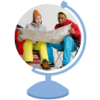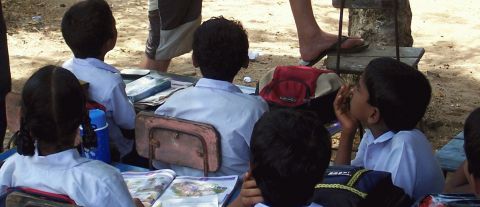Study guide with Psychology
Online summaries and study assistance with the 6th edition of Psychology by Ciccarelli & White
- For Booksummaries with Psychology by Ciccarelli & White, see Summaries per chapter with the 6th edition
- For all available summaries with Psychology by Ciccarelli & White, see Study guide with Psychology by Ciccarelli and White
Related content on joho.org
Meer lezen over studie, stage en samenvattingen
Gerelateerde pagina's
Psychologische vaardigheden en toegepaste psychologie studeren en stage in het buitenland
Psycholoog en coach in het buitenland via betaald werk, stage of vrijwilligerswerk
Vrijwilligerswerk in het buitenland verzekeren
Relaties en meer lezen
JoHo: crossroads via de bundel
- Samenvatting van A History of Modern Psychology van Goodwin
- Samenvatting van Approaches to Psychology van Glassman and Hadad
- Samenvatting van Critical Thinking for Psychology: A Student Guide van Forshaw
- Samenvatting van Chapters on History of Psychology van Van der Velde
- Samenvatting van Psychology van Ciccarelli and White
- Samenvatting van Consciousness: An Introduction van Blackmore & Troscianko
- Samenvatting van Historical and Conceptual Issues in Psychology van Brysbaert & Rastle
- Samenvatting van Introduction to Personality: Toward an Integrative Science of the Person van Mischel et al.
- Samenvatting van Pioneers of Psychology van Fancher and Rutherford
- Samenvatting van Psychological communication: Theories, roles and skills for counsellors van Lang and Van der Molen
- Studiegids voor samenvattingen van Psychological Science door Gazzaniga
- Samenvatting van Psychologie en de multiculturele samenleving van Knipscheer
- Samenvatting van Psychologie: een Inleiding van Zimbardo e.a.
- Samenvatting van Psychologische gespreksvoering: een basis voor hulpverlening van Lang and Van der Molen
- Samenvatting van Psychology: Foundations and Frontiers van Bernstein
- Samenvatting van Psychology: The science of Mind and Behaviour van Holt
- Samenvatting van Psychology van Gleitman e.a.
- Studiegids voor samenvattingen van Psychology door Gray and Bjorklund
- Samenvatting van Straight Choices: The Psychology of Decision Making van Newell et al.
- Samenvatting van Streetlights and Shadows: Searching for the Keys to Adaptive Decision Making van Klein
- Psychologie en Gedragswetenschappen: uitgelichte boeksamenvattingen
Psychologische vaardigheden en toegepaste psychologie studeren en stage in het buitenland
Activiteiten in buitenland
Nieuws
Partners: met impact
JoHo WorldSupporter: crossroads
JoHo: crossroads in spotlight
- 1 of 4
- volgende ›
Chapters
Teksten & Informatie
JoHo: paginawijzer
JoHo 'chapter 'pagina
Wat vind je op een JoHo 'chapter' pagina?
- JoHo chapters zijn tekstblokken en hoofdstukken rond een specifieke vraag of een deelonderwerp
Crossroad: volgen
- Via een beperkt aantal geselecteerde webpagina's kan je verder reizen op de JoHo website
Crossroad: kiezen
- Via alle aan het chapter verbonden webpagina's kan je verder lezen in een volgend hoofdstuk of tekstonderdeel.
Footprints: bewaren
- Je kunt deze pagina bewaren in je persoonlijke lijsten zoals: je eigen paginabundel, je to-do-list, je checklist of bijvoorbeeld je meeneem(pack)lijst. Je vindt jouw persoonlijke lijsten onderaan vrijwel elke webpagina of op je userpage
- Dit is een service voor JoHo donateurs en abonnees.
Aanmelden
- Hier kun je naar de pagina om je aan te sluiten bij JoHo, JoHo te steunen en zelf en volledig gebruik te kunnen maken van alle teksten en tools.
Aanmelding: checken
- Hier vind je wat jouw status is als JoHo donateur of abonnee
Prints: maken
- Dit is een service voor wie bij JoHo is aangesloten. Wil je een tekst overzichtelijk printen, gebruik dan deze knop.
JoHo: aanmelden of upgraden
JoHo: footprint achterlaten



















